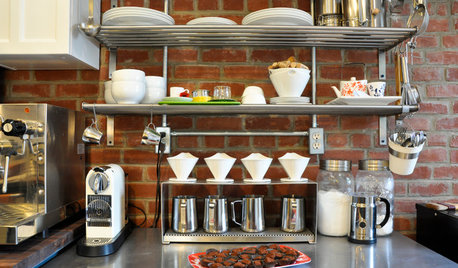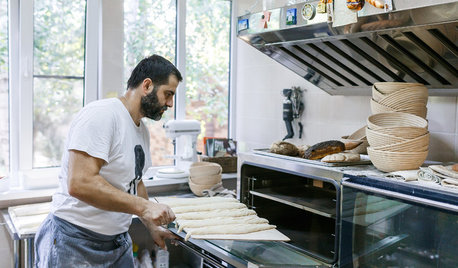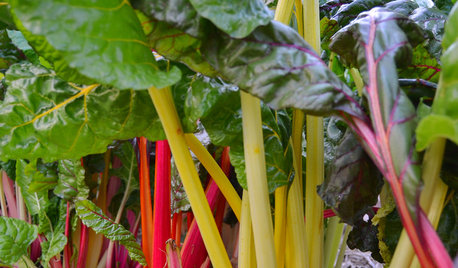It took me forever to find this, but I did. I got my olives from the local golf course. And of course... pesticides... So I soak them day one in a 10% bleach solution to get rid of any evilness.
For my herbs for flavor, I freeze in olive oil to kill all the bacteria. I do love garlic, fennel, rosemary, and jalepenos...
And here is the recipe:
Unlike most other fruits, olives aren't fit to eat right off the tree. They contain a bitter-tasting and astringent glucoside. Since the glucoside is water soluble, soaking the fruits from four to seven days in water gradually gets rid of the problem. After the bitterness is gone, you soak the olives in brine for three to four days, then in vinegar for a minimum of three days. At this point they're ready to pack into canning jars.
Curing Kalamata Olives
Kalamata olive curing process
From Chris Smith,
Developed by Basil Papahronis,
Pick olives when their color is red to purple and the texture is still firm. Avoid olives on the ground, unless theyÂve just been knocked there for picking ease. Minimize bruising by collecting olives in buckets containing water and not by knocking them to the ground.
 Rinse and clean olives with fresh water. Discard leaves, stems and any partially eaten (pecked by birds) olives. Also discard any prune-appearing olives (usually the result of dehydration) because they will result in a mushy olive after processing.
 Slit the olives lengthwise to the pit at least three times using a sharp knife or razor edge. While slitting, sort the olives into separate containers according to size and color. Process each of the sorted olives separately to produce a better-appearing final product. Processing can thus be tailored (longer or shorter water-soaking days) according to their respective degree of ripeness.
 Cover the slitted olives with tap water and allow them to soak for four to seven days. Change the water each day at least three times (morning, noon and night). The olive bitterness (a water-soluble glucoside) is removed by extraction and a slow process of glucoside diffusion into the water. The actual number of days required is best determined by tasting the olives after the fourth or fifth day. If the taste is still unpalatable, continue the water soak another day or two. Note: The firmer and greener the olive, the longer the soaking time required. Caution: The olives at this stage are susceptible to spoilage. Keep containers covered and clean and regularly change the water.
 When the bitterness is gone, soak the olives to cover in a 10 percent salt solution (1 pound salt in 1 gallon water). The olives will initially float because of the strong salt solution; they should be stirred at least once a day to work the floaters into the solution. As the olives absorb the salt, theyÂll gradually (in three to four days) cease to float. Since the salt acts as a preservative at this concentration, spoilage is not a risk, but proper sanitation practices should be maintained for maximum flavor quality.
 Drain the salt solution and refill the containers with enough water to just cover the olives. If you want, wash them again at this stage by draining off the first water addition to remove any sediment that may have accumulated in the container. Then just cover with water again. Add vinegar (1 pint for each gallon of olives) and stir well. Choice of vinegar is yours. (Papahronis prefers wine vinegar.) Stir once each day and allow three days minimum soak time. They are now ready for packing. The olives can be allowed to stand for up to seven to eight days before packing. If allowed to stand longer, a mold may form on the surface that can affect appearance and flavor, but it is not toxic. If this should occur, just drain and rinse with fresh water to remove the mold and pack into jars immediately.
 Package the olives by spooning them into jars (Papahronis uses 1-quart Mason jars). Work the olives down into the jars by gentle tapping to produce a more compact fill. Add into each jar the following: 1 heaping teaspoon salt, 1/4 to 1/2 teaspoon oregano, 1/4 cup fresh wine vinegar, other spices of your choosing, 1/4 cup virgin olive oil, and water to complete filling to the top. (Note: Papahronis doesnÂt use garlic because it overpowers the natural olive flavors.) The vinegar-water mixture used for soaking the olives is drained; not used for the final packaging.
 Seal the jars and shake well to mix all the ingredients.
 Label and date for ease of identification.
 Store in a dark place for two to three weeks. The olives are ready to eat at any time after the salt soak stage, but the flavor improves with age up to three to four months before leveling out.
 Shelf-life of the packaged olives can be anywhere from two to three years. Keeping them longer is not recommended.
 After opening each jar, it may be refrigerated or kept ambient, depending on how long it will take to finish eating the remainder. Refrigerate if longer than two to three weeks.













CA Kate z9
ksrogers
Related Discussions
which basil for what recipe?
Q
How to encourage basil growth?
Q
Fresh Olives?
Q
Garlic harvesting, curing & storing - How To
Q
readinglady
nancyofnc
CA Kate z9
Suzi AKA DesertDance So CA Zone 9bOriginal Author